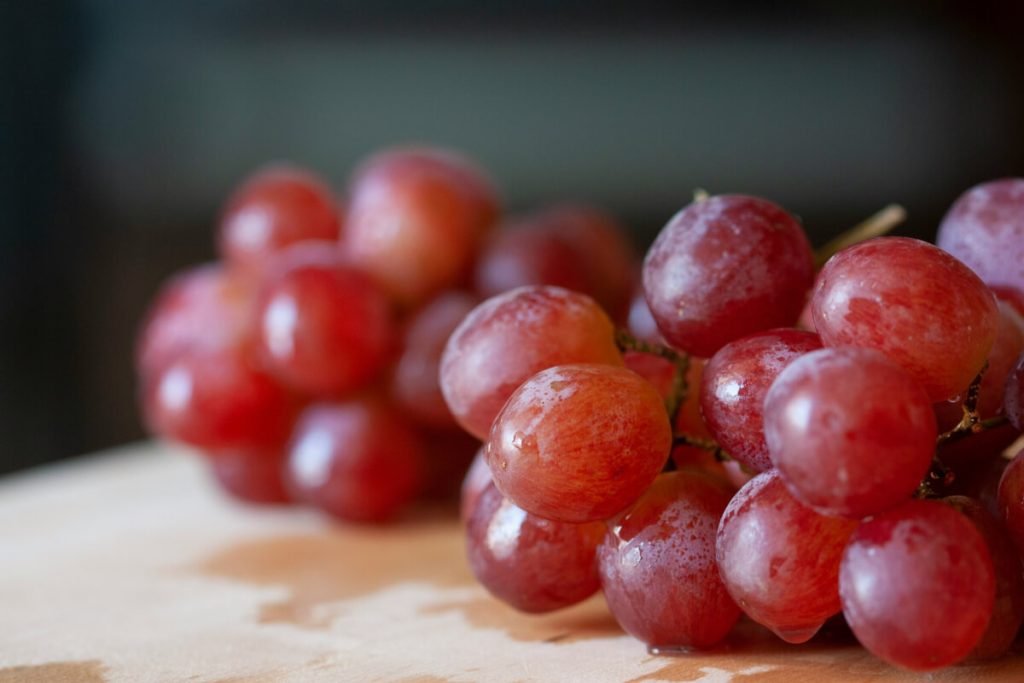

(Photo by J Yeo on Shutterstock)
In a nutshell
- Regular grape consumption may help women’s muscles function more like men’s at a genetic level, potentially offering new ways to prevent age-related muscle loss
- The study found that consuming the equivalent of two servings of grapes daily led to significant changes in muscle-related genes, with stronger effects in females than males
- While physical muscle appearance didn’t change, the research suggests grapes influence muscle health at a fundamental level before visible changes occur
SPRINGFIELD, Mass. — Could adding grapes to your daily diet help maintain muscle strength and health as you age? A new mouse model study suggests these antioxidant-rich fruits might help reshape muscle composition, particularly in women, as they enter their later years.
Published in the journal Foods, this investigation — partially funded by the California Table Grape Commission — tracked 480 mice over two and a half years, examining how grape consumption affects muscle gene expression at a fundamental level. The findings highlight how something as simple as adding grapes to our daily diet might help support muscle health during aging.
Muscle loss affects millions of older adults worldwide, with 10-16% of elderly individuals experiencing sarcopenia—the progressive deterioration of muscle mass and function that comes with age. Women often face greater challenges maintaining muscle mass, particularly after menopause, making this research especially relevant for aging females.
Researchers from several U.S. universities discovered that consuming an amount of grapes equivalent to two human servings daily led to notable changes in muscle-related gene expression. While both males and females showed genetic shifts, the effects were particularly pronounced in females, whose gene activity patterns began shifting toward those typically observed in males.
This convergence occurred at the genetic level, where researchers identified 25 key genes affected by grape consumption. Some genes associated with lean muscle mass increased their activity, while others linked to muscle degeneration showed decreased expression.


What makes grapes so special? The fruit contains over 1,600 natural compounds that work together in complex ways. Rather than any single component being responsible for the benefits, it’s likely the combination of these compounds that produces such significant effects.
“This study provides compelling evidence that grapes have the potential to enhance muscle health at the genetic level,” says Dr. John Pezzuto, senior investigator of the study and professor and dean of pharmacy and health sciences at Western New England University, in a statement. “Given their safety profile and widespread availability, it will be exciting to explore how quickly these changes can be observed in human trials.”
Proper muscle function plays a crucial role in everyday activities, from maintaining balance to supporting bone health and regulating metabolism. The potential to help maintain muscle health through dietary intervention could significantly impact quality of life for aging adults.
The research adds to a growing body of evidence supporting grapes’ health benefits. Previous studies have shown positive effects on heart health, kidney function, skin protection, vision, and digestive health. This new understanding of grapes’ influence on muscle gene expression opens another avenue for potential therapeutic applications.
While the physical appearance and weight of muscles didn’t change significantly between groups, the underlying genetic activity showed marked differences. This suggests that grapes might influence muscle health at a fundamental cellular level, even before measurable functional changes occur—though further research is needed to confirm these effects.
For older adults concerned about maintaining their strength and independence, these findings suggest that a daily bowl of grapes in addition to regular exercise just might offer an additional tool in the healthy aging toolkit.. However, the researchers emphasize that human studies are still needed to confirm these effects.
Paper Summary
Methodology Explained
The study used 480 mice (240 male, 240 female) divided into four groups: standard diet males, grape-supplemented diet males, standard diet females, and grape-supplemented diet females. Starting at one year of age, half received regular food while half got food containing 5% grape powder—equivalent to humans eating two servings of grapes daily. After 2.5 years (around human age 80), researchers analyzed muscle tissue samples from representative mice in each group.
Results Breakdown
Analysis revealed significant changes in gene expression patterns between diet groups. Female mice on the grape diet showed genetic patterns more similar to males than females on the standard diet. Of 25 key muscle-related genes identified, 11 increased activity while 10 decreased, with changes suggesting improved muscle health. The grape diet appeared to normalize genetic differences between male and female muscle tissue.
Study Limitations
The research used mice rather than humans, so results may not translate directly. The detailed genetic analysis focused on a relatively small subset of mice (five per group). While genetic changes were observed, the study couldn’t determine if these translated to functional improvements in muscle performance.
Discussion and Takeaways
The findings suggest that dietary interventions like grape consumption might help address sex-based differences in muscle aging. The study identifies specific genes affected by grape consumption and their potential roles in muscle health. These results could inform future research into preventing age-related muscle loss, particularly in women.
Funding and Disclosures
The study received partial funding from the California Table Grape Commission. Senior investigator Dr. John Pezzuto also serves on the commission’s scientific advisory committee. The funders had no role in the design of the study; in the collection, analyses, or interpretation of data; in the writing of the manuscript; or in the decision to publish the results. The remaining authors declare that they have no competing interests.
Publication Information
Published in Foods journal (February 2025, Volume 14, Issue 695) by researchers from Western New England University, Rutgers University, and UMass Chan Medical School-Baystate. The research was released on February 18, 2025.








